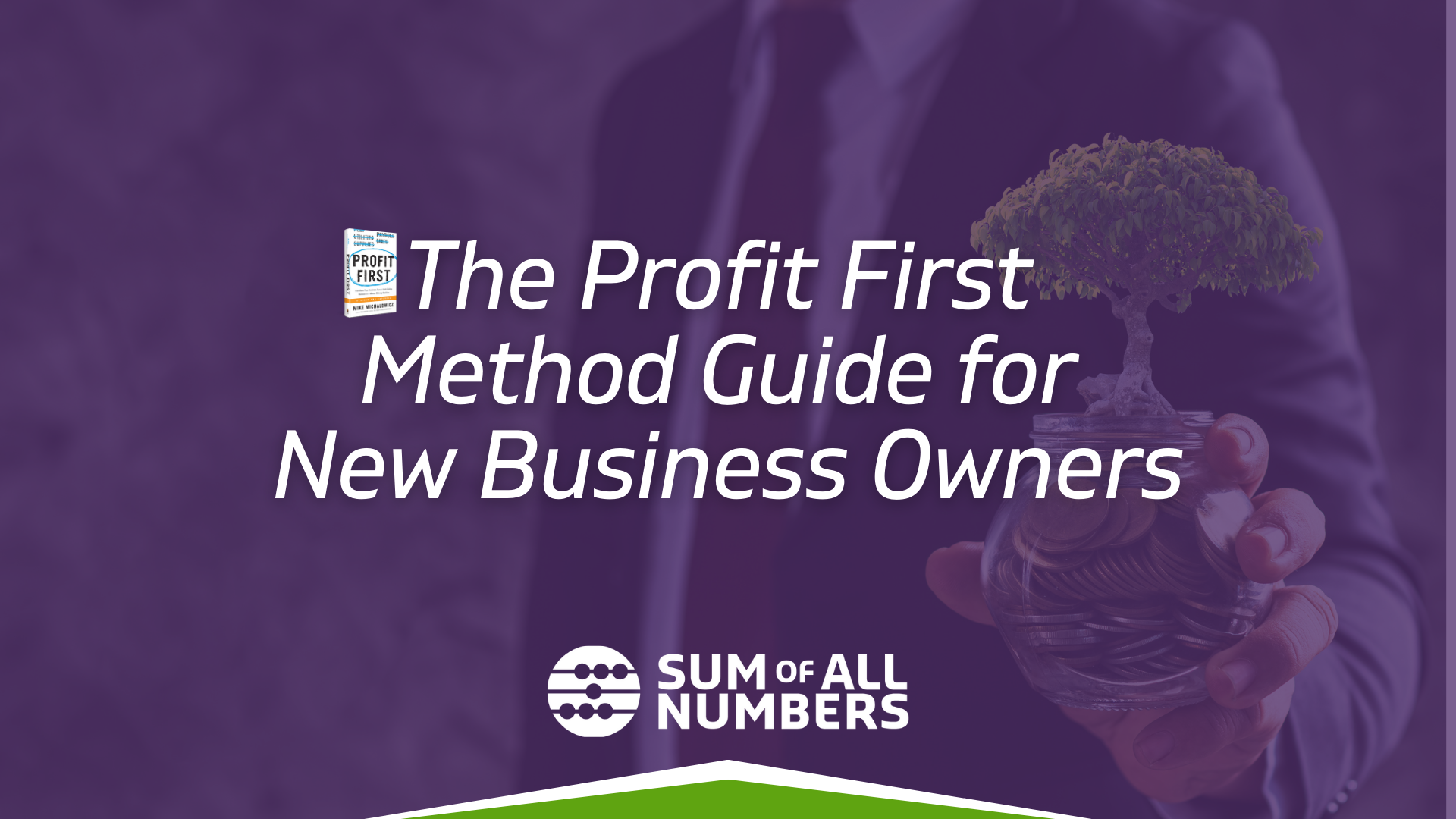Profit First is a system to keep your business in a profit zone. It’s self-adjusting and keeps you on track, eliminating any painful or disastrous decisions you can make using traditional business accounting methods. Here are the five foundational accounts of the Profit First system.
At Sum of All Numbers, we provide bookkeeping and consulting services using the Profit First system. Call us today at + (888) 564-5777 or schedule an appointment here.
Related articles:
- WHY WOULD I NEED PROFIT FIRST PROFESSIONALS FOR MY BUSINESS?
- THE PROFIT FIRST METHOD GUIDE FOR NEW BUSINESS OWNERS
The key to mastering this system is getting things right at the foundational level. Once that’s done, the rest becomes easy. So what makes up the bedrock for the Profit First system?
Profit Account (the bucket that identifies why you started your own business in the first place)
Generally accepted accounting principles give us a formula: Revenue minus Expenses equals Profit. This formula says the money you have left over after all your bills are paid is called profit. With Profit First, we change the order of that formula to Revenue minus Profit equals Expenses.
With Profit First, we take our profits FIRST because it’s the reward for hard work, risk-taking, and investing in yourself and your business.
Tax Account (for the tax liability of the owner of the business – what you will owe the IRS and your state for the success of your business)
We expect you to be successful – and to be profitable. And because of this, you’re going to owe Uncle Sam and possibly your state as well. This account is like your Tax Collector account.
But unlike the Tax Collector, this is not an account you can draw from as needed. Rather it is a set-up so that every time you make a sale or earn income as part of your business, it automatically goes into this separate account on its own.
It helps ensure that all those payments are made to our government agencies on time without fail! And if there’s a surplus at any point during the year, you don’t want those extra funds sitting in other accounts.
That’s because they could be taxed heavily come April 15th. Instead, put them right back into this Tax Account where they’ll be safe until next year’s taxes roll around again.
Owner’s Pay Account (your own salary)
The owner’s pay account is the account that represents what you should be paying yourself for the work you do in your company. Whether you support yourself from a salary or draw out of your business, this is the account where those funds are held.
When you first start your business, a higher percentage of cash will be put into this account. Why? Because you are doing the majority of the work. As your revenue grows, the allocated percentage of revenue to be deposited into this account decreases. Why? Because you are going to be hiring help or outsourcing some of the work that you perform.
The main purpose of this account is to set aside a salary that could be paid to someone who stepped into your shoes upon your retirement.
Now, do you have to withdraw all of the cash that builds up in this account? It’s meant for you as the business owner to support your lifestyle and other personal goals you may have.
Operating Expense Account (for overhead costs that fluctuate from one month to the next)
So far, we’ve discussed three bank accounts that are meant for YOU – the OWNER of the company. This account, the Operating Expense Account, is specifically for the expenses of the business. Operating expenses are everything from payroll to office supplies to advertising to utilities to software to travel, etc.
In traditional accounting, operating expenses are paid first, and anything that is left over is meant for you. In Profit First, only a specific percentage of all revenue is allocated to cover your operating expenses. And your business should trim down costs so that those costs never exceed what cash exists in this account.
This account is your control mechanism for profitability! This account lets you know if you can afford a new employee or a larger office space.
Five Foundational Accounts: Income Account
(where you receive payments from customers)
Every penny your company earns is to be deposited into this account. Whether you sell products or provide services, this account is meant for that income. Nothing is paid out of this account. 100% comes in, and then 100% is going to be transferred out to the other 4 accounts listed above.
Five Foundational Accounts: Conclusion
Profit First is a system. And this system is based upon the behaviors we have as humans – and more specifically, as entrepreneurs. The Profit First bank accounts are fundamental to the success of this system and, thus, fundamental to the profitability of your company.
These bank accounts are not a nuisance or an inconvenience. They are your pathways to paying yourself, providing for your future, making wise business decisions and preventing devastating consequences from spending money when your business cannot support those expenses.
That’s why we decided to create a list of five foundational accounts you need to know. This article will get you started if you want an overview of the whole system.
Related articles:
- WHY WOULD I NEED PROFIT FIRST PROFESSIONALS FOR MY BUSINESS?
- THE PROFIT FIRST METHOD GUIDE FOR NEW BUSINESS OWNERS
If you are looking for an accounting solution using the Profit First system to help you focus on your business, Sum of All Numbers can help you with that. Call us today at + (888) 564-5777 or schedule an appointment here.




